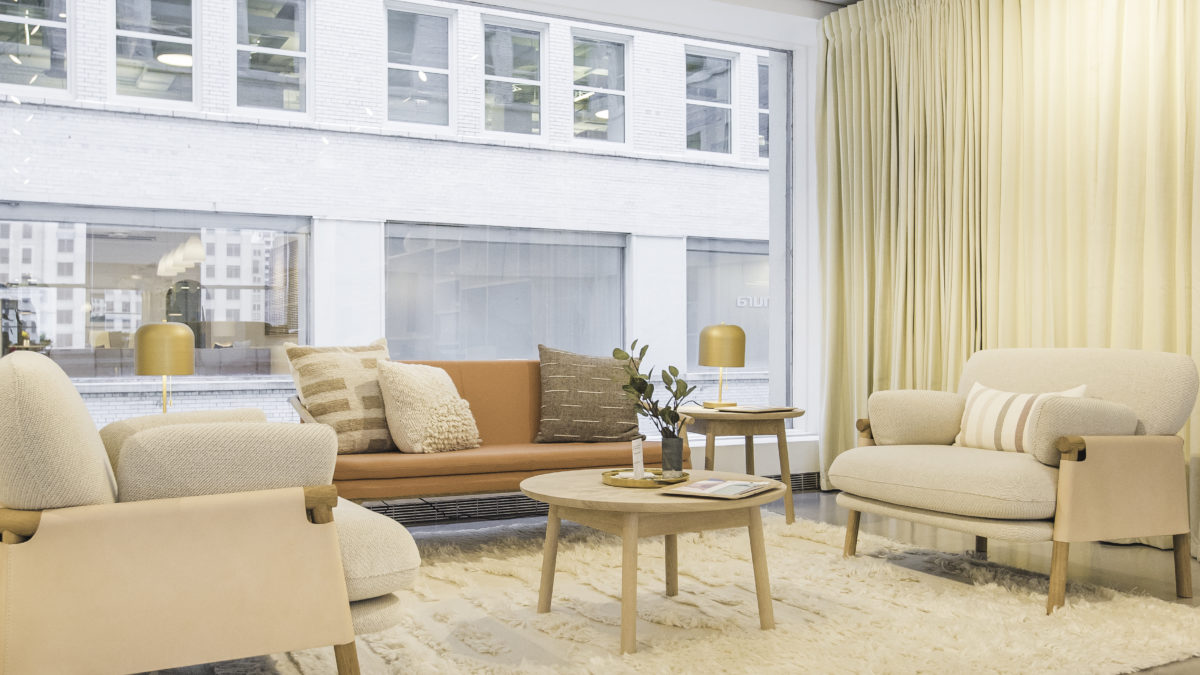
by Kelly Jahn, senior architect with Bergmann
There is a pattern to architectural and design styles emerging from political, economic, social and technological changes of the time—or as a reaction against them. After many discussions and exploration at the NeoCon show this summer, I believe we are currently in one of these historic shifts as designers react to our hectic, technology-saturated lives.
This was my fifth year as a Best of NeoCon judge. I am honored and excited to participate each year and spend time with the other 40 or so architects, designers and facilities managers from across the country. The teams spend three days prior to the opening of NeoCon visiting showrooms and listening to presentations from product designers who have traveled from all around the world to introduce products and compete in the Best of NeoCon, presented by Contract magazine and sponsored by NeoCon and The McMorrow Reports. NeoCon is an annual workplace interiors conference and showcase at The Mart in Chicago.
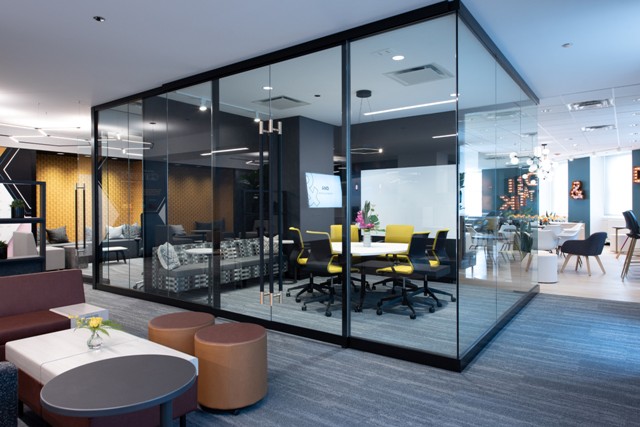
How did we arrive at today’s ideas for product design? We reflect on Gothic Architecture, an expression of hope and symbol of technology following the struggles of the Dark Ages. During the 17th and 18th centuries, Baroque emerged to demonstrate the wealth and power of the Catholic Church in response to the Protestant Revolution. Whimsical Rococo was a reaction against the formality and rigidity of Baroque. The Arts and Crafts movement of the early 1900s was a reaction against the machine aesthetic that followed the Industrial Revolution. And the 1950s and ’60s saw the emergence of post-modern style with its more sculptural, classically inspired forms, as the first reaction against modernism.
History repeats itself. It follows a pattern and when the pendulum swings too far in one direction, designers force it to swing back.
Designers are reacting
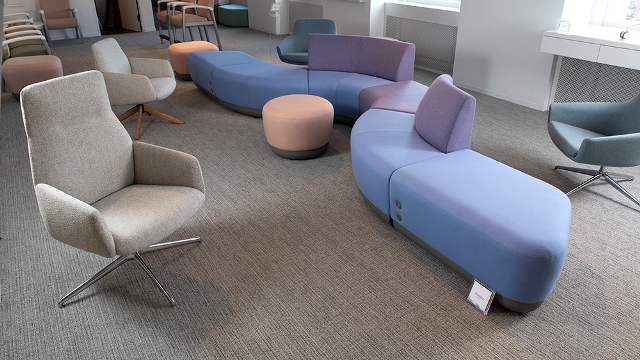
While many designers and manufacturers are inventing products to make work faster, easier and more collaborative, many are saying it is time to step back from our insane pace of life, dependence on technology and the 24-hour news cycle.
Based on conversations with architects, designers and researchers during my time in Chicago and through my own observations, I perceive the emerging trends in architecture and design as a new style, clearly a reaction against the state of our world.
Although the trends discussed in this article are just a microscopic snapshot of what’s happening in the world of design, I do believe they are a reflection of current society. There’s a shift in consumer values toward authenticity, sustainability and simplicity. Products and spaces are trending toward makers and handicrafts. Designers are seeking ways to connect to nature through biophilic and biomimetic design, as well as blurring the transition between indoors and outdoors. There’s a renewed focus on the psychological and cognitive aspect of space and the importance of color.
The Makers & Handicraft trends
Product designers are celebrating craft and looking to traditional artisan processes as inspiration and innovation. Natural textures are everywhere. Products have a story that connects them to nature, culture or a geographic location. There’s movement away from synthetic materials, and like traditional architecture and design, a focus on regionally appropriate solutions and locally sourced materials.
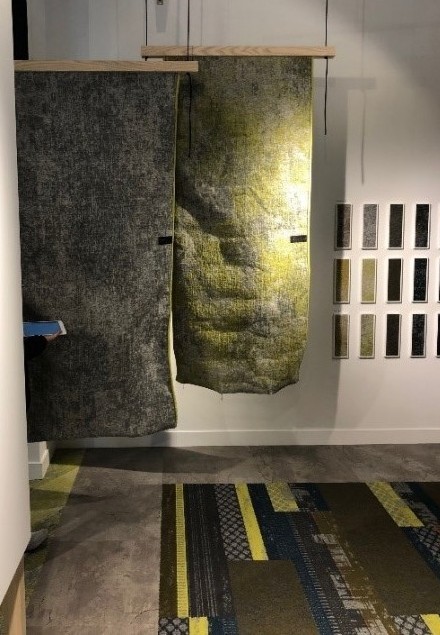
For Best of NeoCon 2019, Shaw Contract submitted a modular carpet, Community. The design team spent time in Morocco with artisans and women’s co-ops to learn their weaving techniques, exchange ideas and practice different techniques. Patcraft, a subsidiary of Shaw Contract, explored the inner workings of carpet construction and traditional embroidered textiles to create Deconstructed Felt, winning Gold in the Modular Carpet category.
Biophilia and biomimetic design dominates
Interesting collaborations are happening among architects, designers, scientists, researchers and manufacturers to create biophilic or biomimetic products and environments. Anastasija Lesjak and Martin Lesjak, product designers from 13&9 Design, of Graz, Austria, collaborated with the Mohawk Group and Richard Taylor, professor of physics, psychology and art at the University of Oregon, to create Relaxing Floors, a modular carpet system intended to mimic eye movements that take place as we view natural scenery.
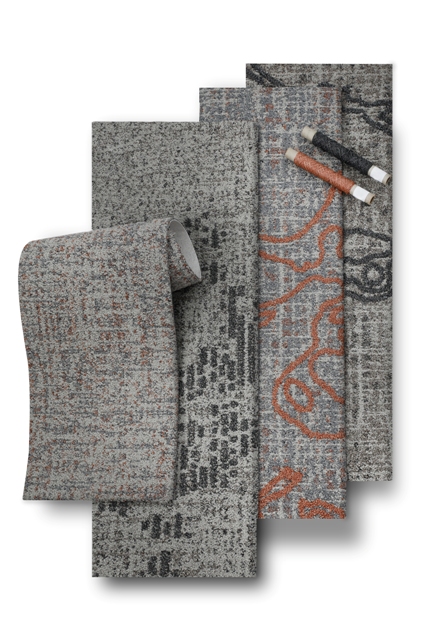
The injection of texture and warmth into commercial spaces is especially prevalent in this year’s showcase with the addition of Sakiori, a woven enhanced resilient tile that combines the soft look of textiles with the durability of hard surfaces.
Designers are searching for ways to link building occupants to the natural environment through a direct or indirect connection. Biophilia, a hot topic in design, has been seen in architecture far back in the ancient world. Recently, it is more of a conscious effort with tested and proven health, well-being and economic benefits.
Blurring the transition between indoors and outdoors
As designers study the benefits of a connection to nature to create healthy indoor environments, they are seeking to include outdoor space as part of the project planning and design process. This year, for the first time, Outdoor Contract and Hospitality Seating was included as a category in the Best of NeoCon competition. Exterior hospitality spaces now are designed as part of workplace environments, and interior designers regularly specify outdoor furniture.
Focus on psychological and cognitive aspects of space
Designers are creating spaces that are physically, psychologically and environmentally comfortable while also inclusive and functional, such as the Hightower space shown here.
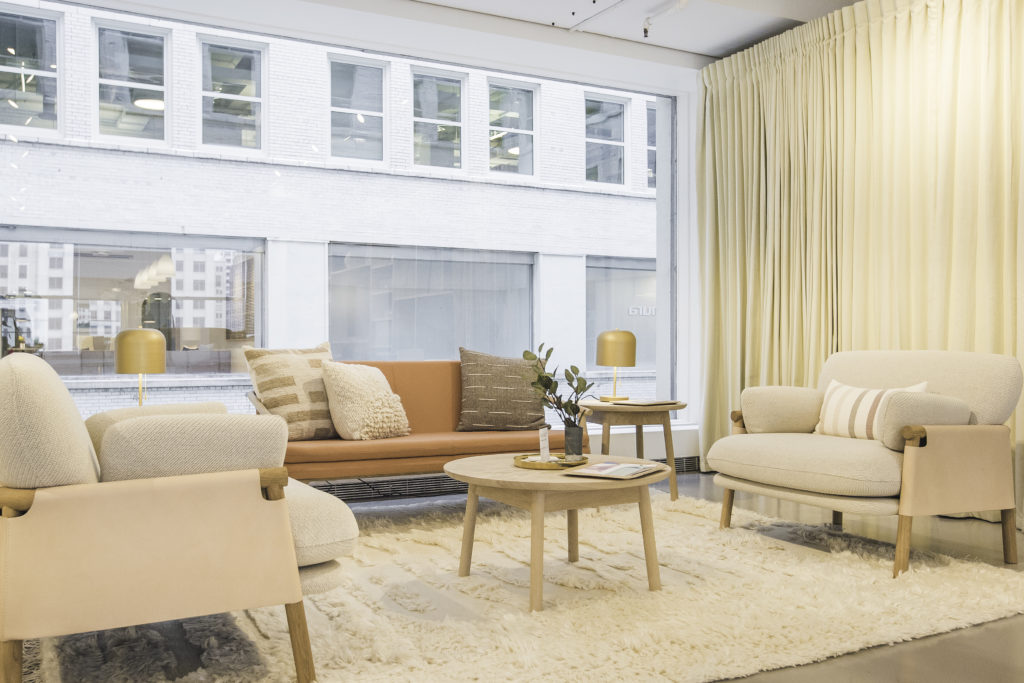
Researchers, recognizing the challenges of open office environments, are solving issues arising from this trend. Workplace designers, like educational designers, understand that not everyone has the same working or learning style. Many manufacturers presented desking and collaborative furniture systems that allow users more flexibility in the way they work.
Color is back
After years of grey, color is back in favor. Evoking calm, palettes are either trending toward soft pastels and neutrals inspired by the 1950s or bold, jewel tones that boost energy.
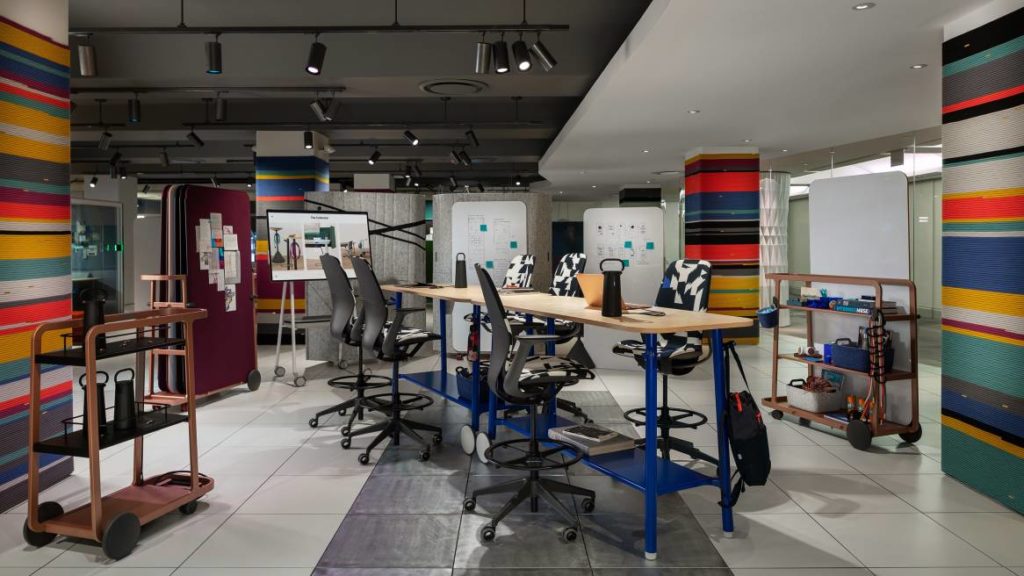
Consumer values are shifting toward authenticity, sustainability and simplicity. A renewed focus on health and well-being can be seen in living, learning and working spaces. Designers are seeking a connection to the natural world in the spaces they are creating and the products they are designing or specifying. It’s a reaction against the chaos in the world. It’s a historic shift, and as we reflect, I believe we will consider this a new stylistic movement in architectural and design history.
Kelly Jahn is a senior architect with Bergmann in the Rochester, New York office. She has over 20 years of experience specializing in interior architecture. Jahn is also an adjunct instructor in the department of Interior Design at RIT.
